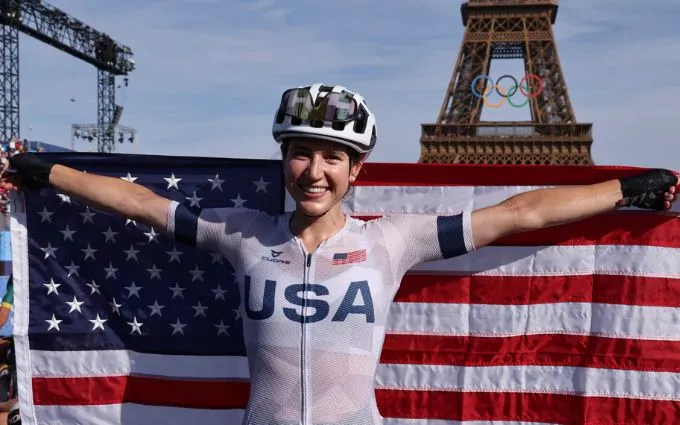The Olympic road race in Montmartre saw a dramatic turn of events as Kristen Faulkner from the USA clinched the gold medal. Amidst the chaotic cobbled streets and tactical confusion, Faulkner’s composed approach set her apart, securing her a well-deserved victory.
Race Overview
Montmartre’s course is known for its difficulty. It features cobbled streets and steep climbs that challenge riders physically and strategically. The technical nature of the course meant that every move was crucial. The absence of race radios added to the unpredictability and complexity of the race.
The Absence of Race Radios
Race radios are typically used for real-time communication between riders and teams. Their absence created a heightened sense of confusion. Riders had to rely on their instincts and observations, which added a layer of difficulty. This communication breakdown significantly impacted tactical decisions throughout the race.
Early Stages of the Race
From the start, the race was aggressive with several breakaways. The Côte du Pavé des Gardes, located 90 km from the finish, was a key point where serious attacks began. These early moves set the tone for the rest of the race. The initial breakaways were a sign of the intense competition to come.
Key Incidents
One of the pivotal moments was a crash involving Chloé Dygert, which also affected Lotte Kopecky. This incident caused significant disruption in the main peloton. The British team temporarily gained an advantage but struggled with tactical errors. Their missteps contributed to their eventual positions in the final standings.
The Strategic Moves
Kristen Faulkner’s ability to stay calm under pressure was critical. Her composed approach allowed her to evaluate the race situation effectively. This strategic mindset helped her seize opportunities that others might have missed. Faulkner’s thoughtful decisions were key to her eventual success.
The Final Climbs
The final climbs on the Côte de la butte de Montmartre were crucial. The challenging terrain tested the riders’ endurance and strategy. Faulkner made a decisive move during these climbs. Her ability to navigate the difficult terrain effectively contributed to her victory.
Competitive Landscape
The race featured strong competitors like Marianne Vos and Lotte Kopecky. Vos, a London 2012 gold medallist, and Kopecky, the reigning world champion, both faced their own challenges. The British team, including Anna Henderson and Lizzie Deignan, also encountered difficulties. These factors shaped the competitive dynamics of the race.
Critical Moments
With 3.5 km remaining, Faulkner made a crucial move. The leading group hesitated, creating an opportunity for Faulkner. Her decisive attack allowed her to break away and secure the gold medal. This move was a defining moment in her victory.
Post-Race Reflections
After the race, the British team reflected on their performance. They faced tactical issues and missed opportunities that affected their results. Faulkner, however, was celebrated for her remarkable performance and strategic prowess. Her victory was a highlight of the event.
Impact of the Victory
Faulkner’s gold medal is a significant achievement for the USA. It highlights her exceptional skill and strategic thinking. The race also had broader implications for the competitors, influencing their future strategies and preparations. Faulkner’s success is a testament to her hard work and determination.
